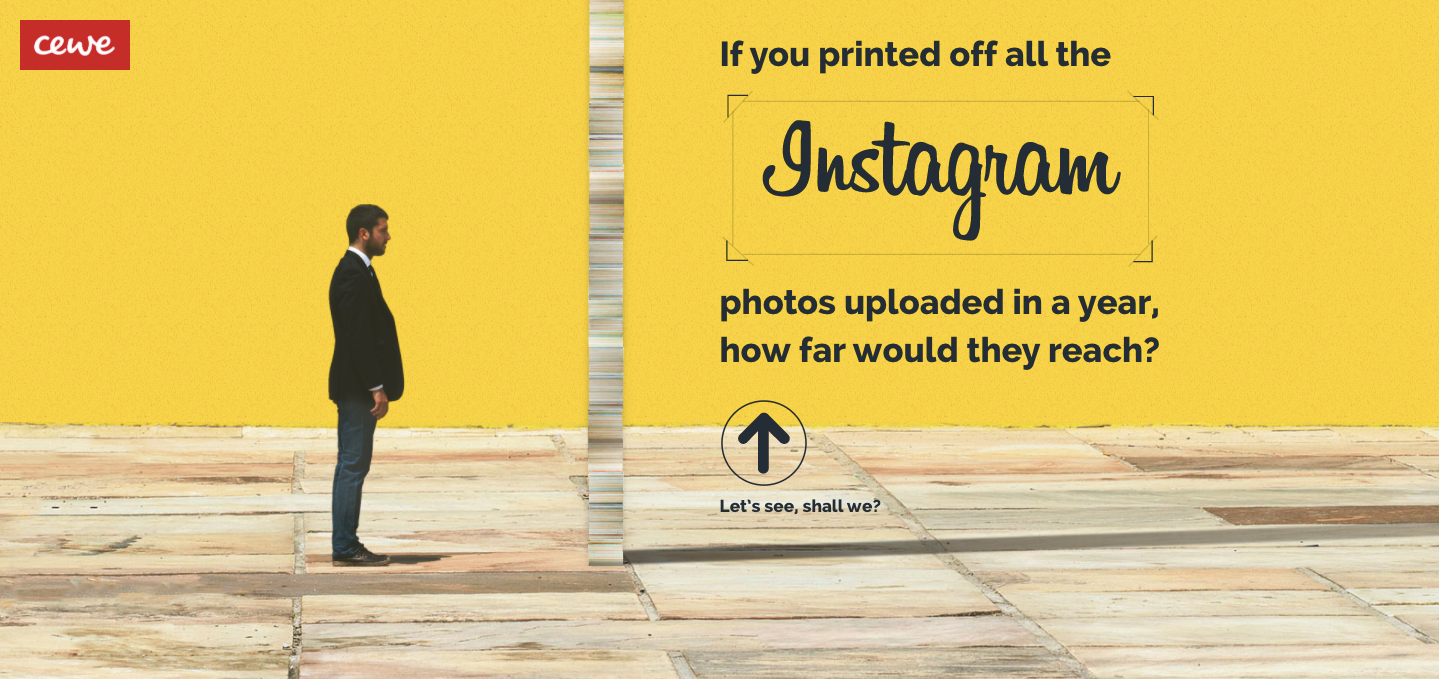That Digital PR Campaign has been done before – can you do it again?
Thoughts on why remakes and remixes fail, and how we might alter our approach to these types of campaigns.
This post originally started out as a talk called Difficult Second Album Syndrome which I gave at Drink Digital earlier this year.
Within the talk I asserted that when creating digital PR content (or content that’s designed to get links and coverage from journalists), in one way or another we’re all under much the same pressure – we’re trying to replicate the success of others.
Sometimes we’re seeking to replicate the success of others in a pretty abstract way – we see other people’s successful campaigns on Twitter, LinkedIn, industry blogs and so on, and feel the pressure to replicate the results that others have achieved.
Other times were seeking to quite literally replicate success – we see a successful campaign (that either we’ve made ourselves in the past, or that someone else has made), and we think to ourselves – could we do something like that?
In this post I’ll focus solely on the latter – literal replication.
In a serendipitous twist of fate, when I was writing this article, I came across this tweet from Louise Parker, Digital PR Director at @propellernet:
Im not saying im massively advocating this because creativity and innovation are great yada yada but I swear the biggest myth is that if your idea has been done before you can’t do it.
— Louise (@louisevparker) May 7, 2021
I totally agree with Louise – just because an idea’s been done, doesn’t mean you can’t do it. I’ve been involved in the creation of a number of campaigns like this in the past, and will doubtlessly do more in the future.
However, I think these types of campaigns are worth exploring in more depth, because whilst they can feel like safe bets, and can indeed work well, in my experience they haven’t always delivered the results I was hoping for.
In this post I’ll be offering up some thoughts on where I think I’ve gone wrong in the past, and how I’ve altered my approach to these sorts of campaigns as a result.
Typically we try to (literally) replicate success in one of two ways: we either Remake or Remix
I’d define “remakes” and “remixes” as follows:
Remake – same idea, same topic
Remix – same idea, different topic
I recognise this is tough to understand in the abstract, so let me give you a couple of examples:
This piece is a remake:

Highways to Hell is a piece which we made for GoCompare. It’s a mash-up of publicly available data sources on the most congested roads.
This is the piece we were remaking: The UK’s Slowest Motorways

In 2017, using proprietary data, Satrak revealed the slowest motorways. It should be noted that there are many other pieces out there which have used a variety of data sources to achieve the same goal. If I’m totally honest, my memory on this is hazy, and I’m not 100% sure which of the many pieces out there we were actually remaking (possibly a combination of a bunch of them?), I’m using this one largely for illustrative purposes.
For the GoCompare piece we were using a different dataset, but nevertheless were looking to tell the same story, in the same niche, hence I’d categorise this as a remake.
Now let’s take a look at remixes.
This piece is a remix:

Unicorn League is a piece we created for Sage, which sadly is no longer live on the web (like much of my work). Within it we explored what these $1bn companies and the people who founded them have in common.
This is the piece we were remixing:

Also no longer live, Billionaires League was created for GoCompare. Within it we explored what the world’s billionaires have in common.
Both pieces explore the same thing: “what traits do this cohort share?”; but one looks at Billionaires, and the other looks at Unicorn companies and their founders. I’d categorise this as a remix, because we’re using the same idea but in a different topic area.
As I mentioned previously, I’ve found that both remakes and remixes are prone to failure, and, having experienced failures like this many times, wanted to share some thoughts on why I think this might be the case.
Let’s look at remakes first…
Remakes often feel like a safe bet, but are they?
I feel like it’s often been the case that I’ve viewed a remake as a safe bet, and yet, they don’t always succeed. I feel like in the past when I was considering whether or not to remake something I was approaching the whole thing slightly wrong-headedly. Today, when I’m asked whether or not someone should remake a piece my approach is slightly different.
Rather than looking too closely at the piece itself, instead I’ll look at the coverage the piece originally generated, and then ask myself:
“What are my chances of recreating the conditions which lead to the original piece’s success?”
I feel like this is probably best explained via some examples:
Let’s kick off with the Highways to Hell piece I mentioned earlier – should we remake this remake?

So, what are my chances of replicating the conditions which lead to the success of the original?
Automotive journalists continue to write stories about these types of studies, and they don’t seem to mind that the “winners” (in this case, the worst roads) don’t change much.
As such, if you remade this piece with a new dataset (or an up to date dataset), I think you could reasonably expect to get similar levels of success even if the “winners” haven’t changed much.
That said, there’s a caveat here – I think you could probably expect similar levels of success assuming that someone else doesn’t beat you to it. If someone else created a piece which used the same dataset as yours, say a week or so ahead of your piece going live, then I think you might struggle.
Nevertheless, on balance remaking this piece appears to be a reasonably safe bet.
But of course, that’s not always the case. Let’s take a look at another piece: This is Director’s Cut, a piece where we revealed the films with the highest on-screen death counts:

Should we remake this?
Something you may not be aware of, is that this piece was actually a remake too. Here’s the original piece:

For our remake, we gathered new data, and found a new winner – you’ll see in the original piece, the film with the highest on-screen death count was Lord of the Rings: Return of the King, and in our piece, Guardians of the Galaxy was the eventual winner.
So, what are our chances of replicating the conditions which lead to the success of Director’s Cut? Should we remake this remake?
First up, entertainment journalists do not spend their time perpetually writing articles on studies which examine on-screen death counts. Actually, they don’t spend a lot of time writing up studies at all. They mainly focus on industry news (i.e. new films or TV shows, casting decisions, etc); and a lot of gossip – who’s dating who, who’s arguing with who, etc.
In short, they behave very differently to the automotive journalists we looked at for the Highways to Hell piece.
Let’s go back and look at some of the coverage Director’s Cut received when it was launched. Early coverage mainly focused on the surprise winner: Guardians of the Galaxy; and made mention of the number of family films like the Lord of the Rings trilogy that also made the top 10 due to high levels of bloodshed. This piece in the Guardian is fairly typical write-up.
But then something unexpected happened:

Shortly after the piece launched, Guardians of the Galaxy Director James Gunn shared a piece of early coverage,and then spent 2 hours arguing with people about it on twitter.
Our findings were controversial, with many people believing that given a whole planet was blown up in Star Wars, that film really ought to top the list. Gunn expended an awful lot of time and energy saying: “No, Star Wars does not count”.
A large chunk of the coverage the piece subsequently received was journalists reporting on James Gunn’s tweets.
What are the chances of you replicating those conditions?
If you fail to find a new “winner” you’ll almost certainly struggle to get coverage; (not least because I don’t think Gunn’s going to spend another 2 hours on twitter).
But what if you find a new winner? I guess it depends on whether or not that new winner is likely to evoke similar emotions, right? Will it be as surprising and controversial? What are the chances of the director of the winning film taking to twitter like Gunn did?
It’s not outside the realms of possibility, but I’d suggest that your chances of replicating the conditions which lead to the success of this piece are much lower than for a piece like Highways to Hell. As such, remaking Director’s Cut might not be such a safe bet.
What about Remixes?
As a quick reminder, I’ve defined a remix as follows:
Remix – same idea, different topic
Effectively here we’re taking an idea and applying it to a different topic or niche. Writing about this in the abstract is awkward so I’m going to leap straight in with some examples.
We’re travelling a considerable distance back in time now, but hopefully you’ll forgive me, I promise it’s a pretty great example. Back when I was at Distilled we created a piece about the amount of time and money people spend playing Candy Crush. The piece is no longer live so I can’t link to it, but there’s a screenshot below:

This Candy Crush piece was a remix of a previously successful piece we created about Instagram:

As is the case with most remixes, my justification for making the Candy Crush piece, was largely based on the success of the Instagram piece. I think it went something like this:
“The previous piece helped people contextualise and understand just how big Instagram was, and in a similar vein, this new piece will be successful because it will help people contextualise and understand just how big Candy Crush is.”
In retrospect I feel strongly that this was a weak justification, however I thought these two topics (Instagram and Candy Crush) were broadly comparable, and therefore these pieces would likely share similar levels of success.
But what I failed to acknowledge was how journalists were writing about Instagram and Candy Crush were not the same, and actually, journalists weren’t writing about Candy Crush much at all.
When we launched the Instagram piece – everyone was talking about it. As a relatively new social network, it was beginning to tip into the mainstream, but it wasn’t quite there yet. As such, there were lots of journalists writing about it – will it actually be the next big thing? Our piece on Instagram achieved success because it allowed journalists to contextualise the size and scale of Instagram, right when that’s precisely what they were trying to do.
Conversely, at the time that we launched the Candy Crush piece, Candy Crush had already peaked. It wasn’t a new phenomenon that people were seeking to understand – it had been (and arguably continued to be) an immensely popular game, but journalists just weren’t writing much about it.
I’d love to tell you that I’ve never made that mistake again, but I have, many times.
Buoyed by the success of the Unicorn League remix I mentioned earlier, we remixed the piece again, this time for the international dog show, Crufts. (Again, sadly the Crufts piece is no longer live, so I can’t link to it.)
But much like with the Candy Crush example above, I failed to notice that the ways in which journalists write about Crufts are not the same as the ways in which they write about Unicorn companies and their founders.
In reality, what you’ll find for the most part is that journalists will write the odd article about Crufts, but they mainly exist for SEO purposes – they’re articles written with the express purpose of ranking for queries like: “When is Crufts on TV?”.
I’ve frequently been guilty of assuming that the ways in which journalists write about different topics are the same, when often they really aren’t. On reflection I feel that it’s this horribly lazy assumption of mine that has directly caused the failure of many of the remixes I’ve been responsible for over the years.
How do we get better at this stuff?
I think it’s probably fair to say that as an industry we’ll likely continue to remake and remix previously successful pieces. And, for what it’s worth, I think there’s absolutely nothing wrong with us doing so.
But it occurs to me that if we alter our approach slightly, and apply a little more rigour to the process, we could conceivably fail at this less often.
Here are a couple of things I’ve learned along the way, which I think have helped me gain clarity around why successful pieces really worked, and helped me to make better decisions around which remakes and remixes to actually produce:
Spend more time looking at the coverage successful pieces have generated
In various talks over the years I’ve said stuff like this:
“study what works & try to deconstruct why”
~ me in 2013, from Throwing Sh*t Against the Wall & Analysing What Sticks,
“by deconstructing the success of others you can improve your own chances”
~ me in 2014, from Appetite for Deconstruction, Lessons in Virality from Axl Rose
“study successful content & try to figure out why it worked”
~ me in 2016, from How to Build a Time Machine
I’m like a broken record, huh?
But despite saying things like this a bunch of times, I wasn’t that great at actually figuring out why a piece was successful.
I spent a lot of time looking at successful pieces, but probably not nearly enough time looking at the coverage they generated. Often I’d actually be looking at a successful piece & trying to slot it neatly into one of my ready-prepared explanations. Explanations like: “highly resonant or emotive topic”; or, “the piece provides journalists with something they don’t have the time or resource to create themselves”; or, “the piece uses data to prove something people suspect might be true”; I could go on, but I’m sure you get the point.
It was a low-effort & pretty comforting way of feeling like I understood this stuff.
And whilst those explanations might not always have been entirely wrong, they weren’t actually that helpful or insightful.
Today, rather than looking at successful pieces, instead I look more carefully at the coverage they generated.
I try to answer these questions in order to gain a deeper understanding:
Stories: What stories did journalists write when they covered this piece?
This is probably best explained with an example. I’m going way back in time again, to look at this piece from Vinepair:

It should be noted that I had nothing whatsoever to do with the production of this piece, but it’s one that’s always interested me because when it launched it generated an awful lot of coverage, and I was really keen to understand why.
So, what stories did journalists write when they covered this piece? The unhelpful answer would be: “when journalists covered this piece, they wrote about beer”.
Sort of true, but it’s not really the whole story. For this piece, there were a bunch of different types of stories: some journalists wrote stories to provoke “outrage” at how insipid the winning beers were; some journalists took a more analytical view and wrote about how two major brewers, InBev & SABMiller own most of these beers; other journalists wrote nostalgic travel stories about sampling those beers whilst visiting those countries.
What’s great about this exercise is that it gives you a clearer sense of why the piece was successful, plus some insight into the various angles which were taken to journalists by the PR folks who worked on the campaign.
Trends & other breaking news: Did the piece feed into something else which was going on in the newscycle?
As you’re looking at the coverage a piece generated also take note of other things which were in play at the time – did this feed into a broader trend or zeitgeist? A news event? The activity of prominent public figures or celebrities?
Waves: Were there waves of coverage?
What caused those waves of coverage? Did the story build in some way? How?
Emotions: What emotions did the coverage provoke?
You can determine this both in the way the piece was written up – i.e. what emotions were journalists seeking to provoke? Plus take a look at the comments – how are people expressing themselves there?
Verticals: Which verticals or types of publication covered this?
This will give you a sense of both the breadth of appeal of the story, and again, will give you some insight into which verticals the PR folks took this story to, and how they framed it in different contexts.
Countries: Did the piece get coverage in multiple countries?
Again, this will give you some insight into the breadth of the story – did the piece offer up stories and angles which would appeal to journalists in multiple countries? How were those stories framed?
Now this is a lot of work, and perhaps some of you are thinking, do I really need to do all that? Honestly, I’m not here to tell you what to do, but I do think exercises like this are hugely beneficial.
Still not convinced? Here’s why I think this stuff is worth spending some time on:
Should you really remake that piece?
To figure out whether or not that remake is really a safe bet, ask yourself: what are our chances of replicating the conditions which lead to the success of the previous piece?
If you’ve already answered the questions outlined in the section above you’ll have a much better understanding of those conditions. Then, you’ll also need to do a little extra work to see if those conditions are still alive and well in journalism today. Are the journalists you’re targeting still writing those sorts of stories? Or has the world moved on?
You might also like to consider the extent to which your remake will allow journalists to write the same sorts of stories as the original piece. For example:
- What stories can you actually sell into journalists off the back of your piece?
- Is there a broader trend or zeitgeist that your piece feeds into?
- Can you link your piece into something in the current newscycle?
- Will your piece provoke the same sorts of emotions?
- Does your piece offer angles for multiple verticals and/or countries?
What about that remix?
Trying to figure out whether or not a remix is likely to be successful is a little trickier, because you’ll need to understand the conditions which lead to the success of the original, AND whether or not this idea might translate successfully into a new vertical.
Again here, answering those questions mentioned previously will give you a deeper understanding of why the original piece worked. You’ll then need to explore the ways in which journalists are writing about whatever topic your piece is focused on. Based on this research it will likely be a little easier to determine how comparable those topics and verticals are in reality. Sometimes they will be, but sometimes they really won’t; do the work before you make the thinger – it’ll save you a lot of heartache in the long run.
Again here, I think it’s also worth considering the extent to which your remix might actually be comparable to the original:
- What stories can you actually sell into journalists off the back of your piece?
- Is there a broader trend or zeitgeist that your piece feeds into in this niche or vertical?
- Can you link your piece into something in the current newscycle?
- Will your piece provoke the same sorts of emotions?
- Does your piece offer angles for multiple verticals and/or countries?
Final thoughts
It’s probably time for me to wrap this thing up, but I’d like to leave you with a couple of final thoughts.
This stuff is *really* hard.
According to Aira’s 2021 State of Link Building Report: 31% of us have created a campaign in the last year that secured no links at all. Also, if you’ve not managed to create a campaign that achieved over 100 links in the past 12 months, then you’re not alone: neither have the vast majority – 74% of the respondents surveyed have not seen this level of success either.
I’m no different. I’ve launched far more “misses” than “hits”, and the truth is that everyone fails a lot more often than you probably realise.
Most importantly though, I’d encourage you to think critically about what I’ve shared here:
Are all campaigns either “remakes” or “remixes”?
Of course not, because this is not the only way we come up with ideas. I suspect however, that many of the ideas we consider to be original, are actually either remakes or remixes, we’re just not necessarily aware of the existence of the originals.
Are these the only reasons “remakes” or “remixes” fail?
- Remakes fail when we’re not able to recreate the conditions which lead to the success of the original piece.
- Remixes fail when we don’t understand what journalists are actually writing about in the niche we’re working in.
Again, of course not. There are many things that can lead to failure. What I’ve shared here can’t possibly solve all the potential problems you might encounter, but I’m hoping that I’ve given you some new things to think about.
Speaking of which, I’d love to hear your thoughts – you can comment right here, message me on twitter, or send an email to hannah@worderist.com.

 End-to-end outreach workflow
End-to-end outreach workflow



 Check out the BuzzStream Podcast
Check out the BuzzStream Podcast







